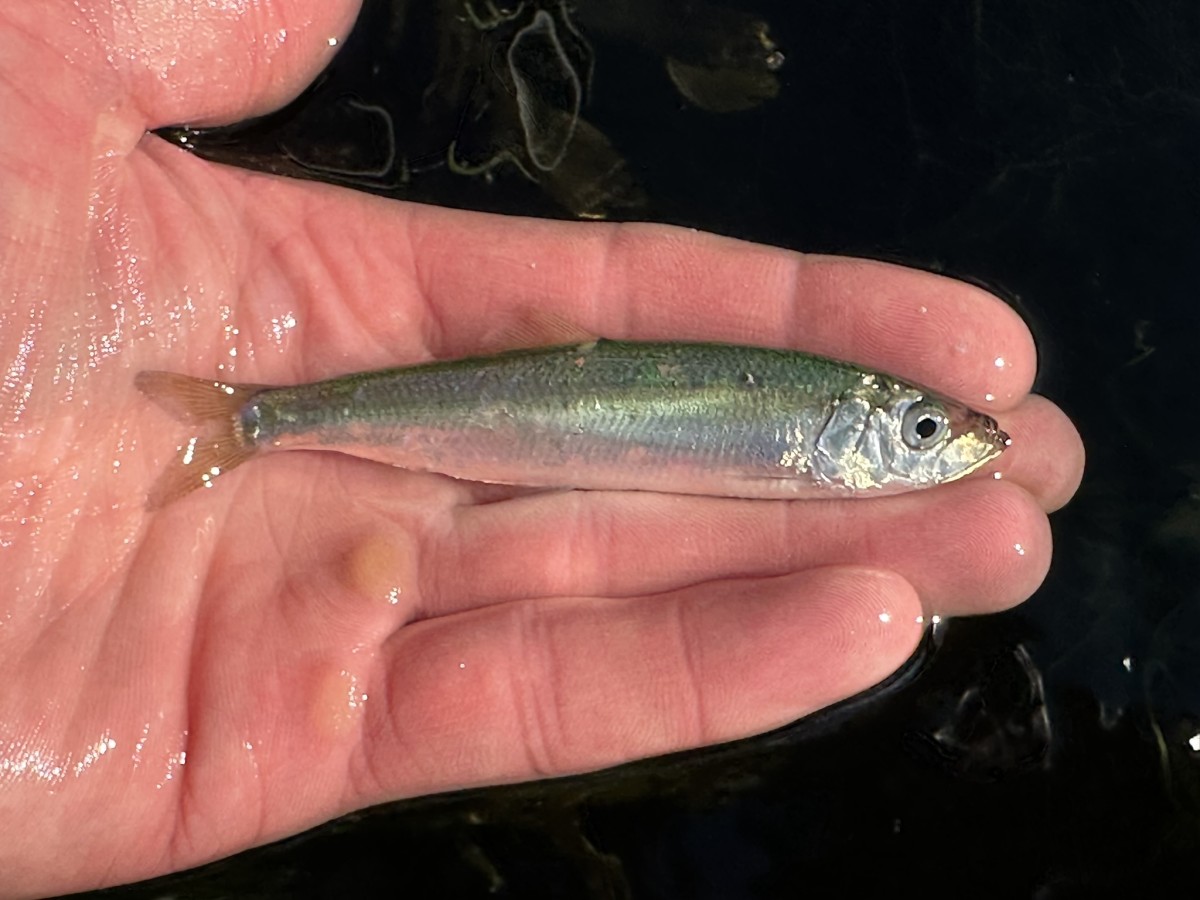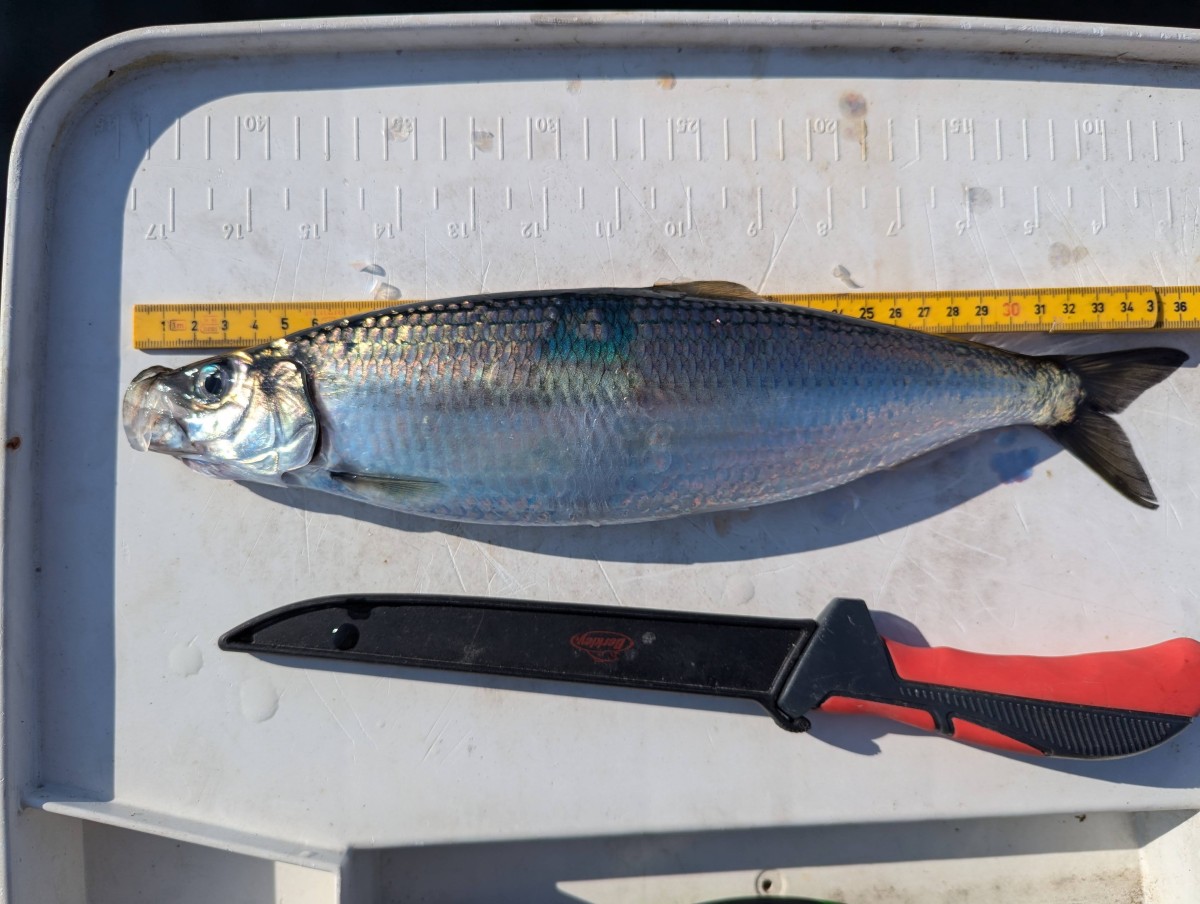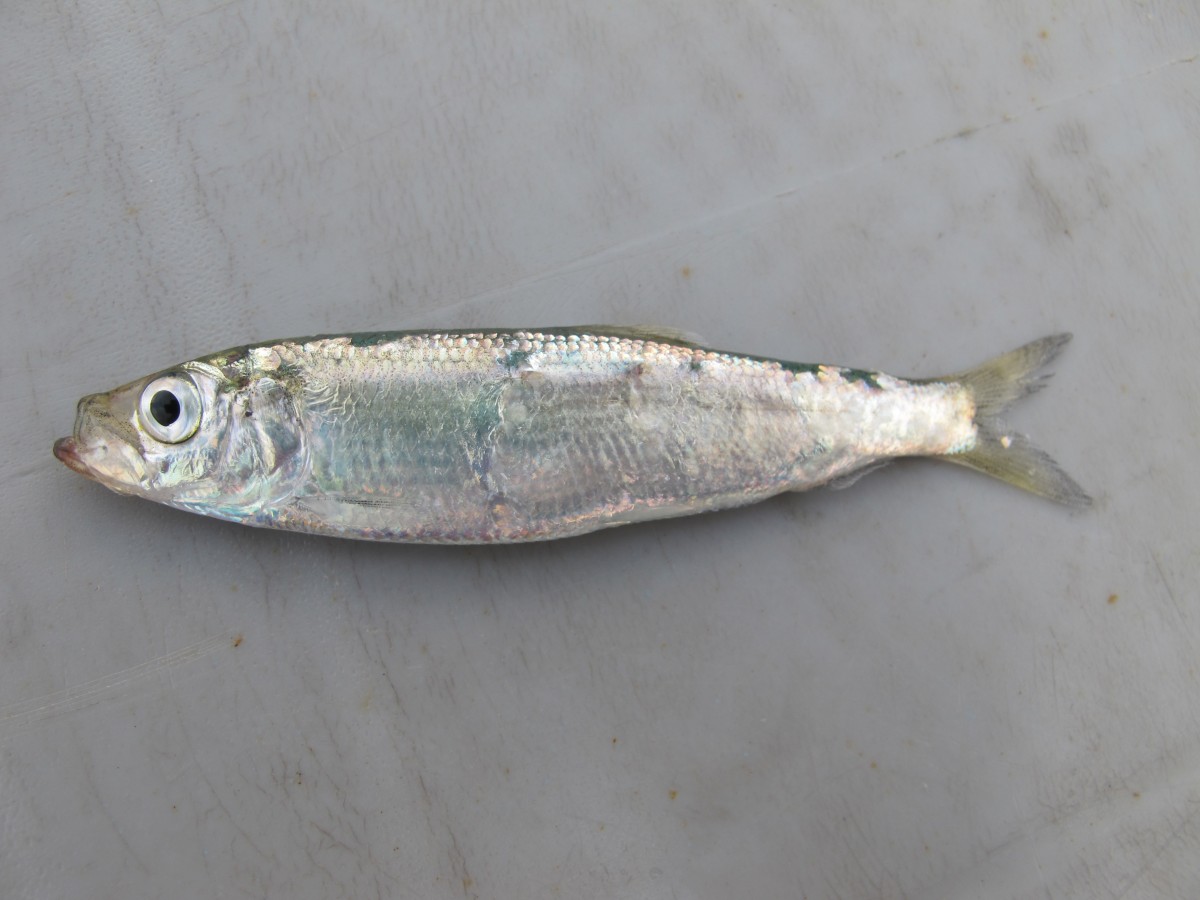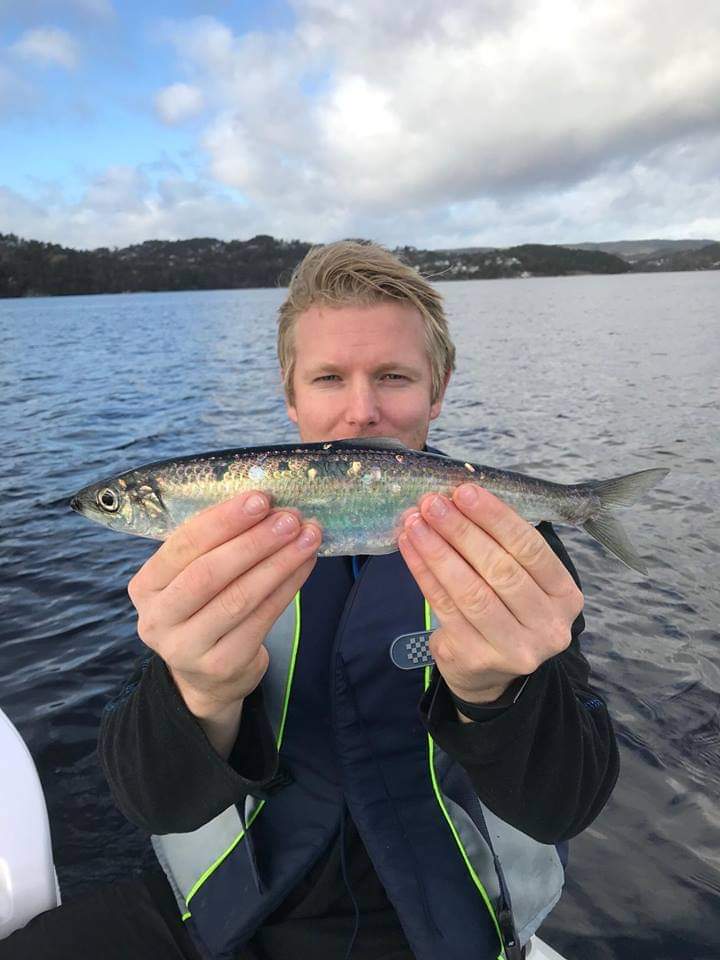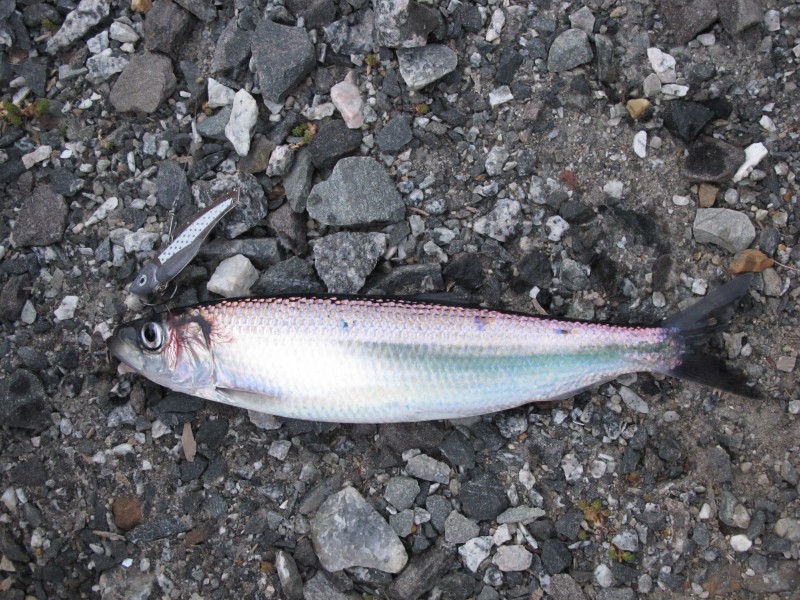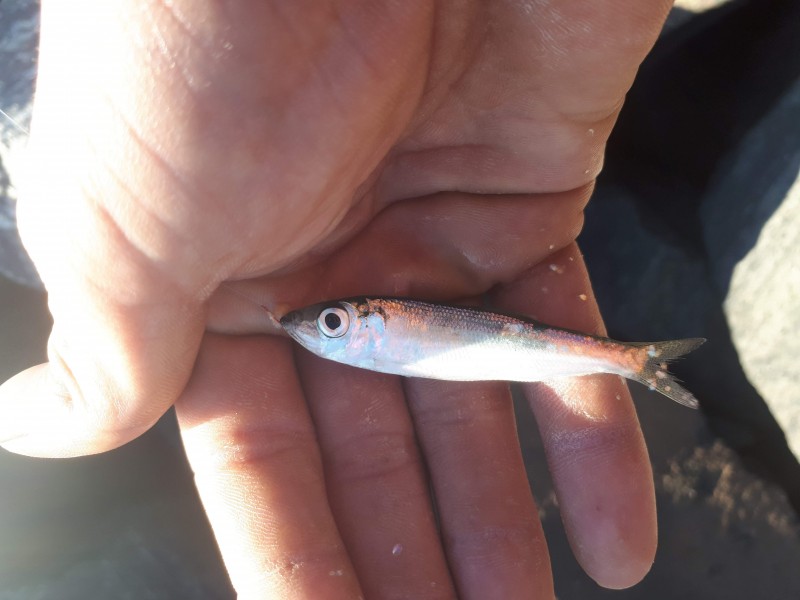Atlantic herring
(Clupea harengus)

Classification
General data
Atlantic herring (Clupea harengus) is a herring in the family Clupeidae. It is one of the most abundant fish species in the world.
Atlantic herrings can be found on both sides of the Atlantic Ocean, congregating in large schools.
They can grow up to 45 centimetres (18 in) in length and weigh up to 1.1 kilograms (2.4 lb).
They feed on copepods, krill and small fish, while their natural predators are seals, whales, cod and other larger fish.
Description
Atlantic herring have a fusiform body. Gill rakers in their mouths filter incoming water, trapping any zooplankton and phytoplankton.
Atlantic herring are in general fragile. They have large and delicate gill surfaces, and contact with foreign matter can strip away their large scales.
They have retreated from many estuaries worldwide due to excess water pollution although in some estuaries that have been cleaned up, herring have returned. The presence of their larvae indicates cleaner and more–oxygenated waters.
Range and habitat
Atlantic herring can be found on both sides of the Atlantic Ocean. They range, shoaling and schooling across North Atlantic waters such as the Gulf of Maine, the Gulf of St Lawrence, the Bay of Fundy, the Labrador Sea, the Davis Straits, the Beaufort Sea, the Denmark Strait, the Norwegian Sea, the North Sea, the Skagerrak, the English Channel, the Celtic Sea, the Irish Sea, the Bay of Biscay and Sea of the Hebrides. Although Atlantic herring are found in the northern waters surrounding the Arctic, they are not considered to be an Arctic species.
